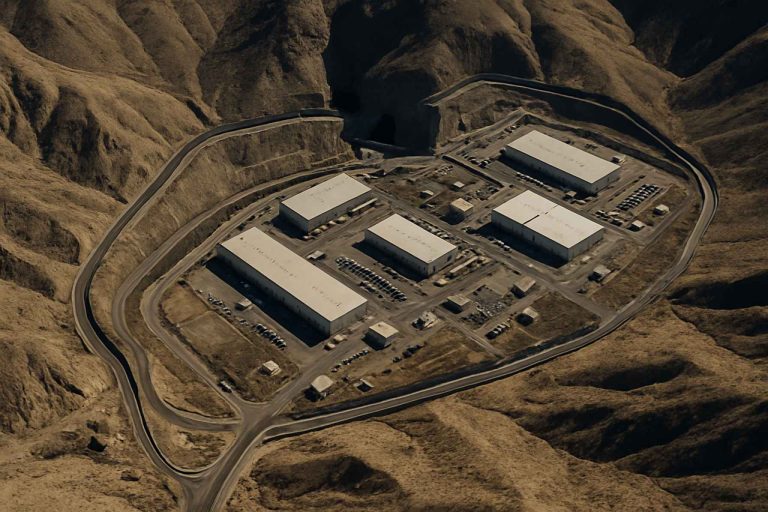
Table of Contents
- Executive Summary: The Quantum Leap in Localizer Nanotechnology
- Market Size and Growth Forecasts Through 2030
- Key Players and Industry Pioneers (Company Websites Only)
- Breakthrough Technologies Powering Quantum Localization
- Emerging Applications Across Healthcare, Manufacturing, and IoT
- Competitive Landscape: Global Leaders and Startups to Watch
- Regulatory and Standards Updates (IEEE, ASME, ISO Sources)
- Investment Trends and Major Partnership Announcements
- Challenges, Risks, and Ethical Considerations
- Future Outlook: What’s Next for Quantum Localizer Nanotechnology?
- Sources & References
Executive Summary: The Quantum Leap in Localizer Nanotechnology
Quantum Localizer Nanotechnology represents a transformative convergence of quantum mechanics and nanofabrication, enabling unprecedented precision in spatial and temporal localization at the nanoscale. As of 2025, industry and academia are witnessing rapid advancements with prototypes transitioning from laboratory proof-of-concept to pre-commercial deployment. These devices leverage quantum effects—such as superposition and entanglement—to achieve localization far beyond classical limits, with significant implications for navigation, medical diagnostics, and secure communications.
In terms of technological progress, quantum localizers are being miniaturized using advanced nanofabrication methods, such as atomic layer deposition and electron-beam lithography. Leading companies and research institutes are actively collaborating to scale up production. For example, IBM and Intel have publicly committed to expanding their quantum hardware research, including devices that integrate localization functionalities with quantum sensors. Meanwhile, Toshiba continues to explore quantum networks with precise spatial referencing, vital for secure quantum communication channels.
Recent data from pilot projects suggest quantum localizer nanodevices can achieve spatial resolution improvements by factors of 10–100 compared to classical counterparts, with error rates dropping below 0.1% in controlled settings. Early clinical collaborations, such as those between Siemens and research hospitals, are exploring the use of quantum-enhanced nanodevices for subcellular imaging and targeted drug delivery, aiming to increase diagnostic accuracy and minimize side effects.
Commercial outlook for the next few years remains highly positive. Standardization and regulatory pathways are being established with input from international bodies such as the International Organization for Standardization (ISO). Industry leaders anticipate that by 2027, quantum localizer nanotechnology will begin integration into next-generation navigation systems, advanced medical imaging devices, and ultra-secure quantum networks. Key challenges ahead include ensuring device stability outside controlled environments and scaling manufacturing processes to meet anticipated demand.
In summary, 2025 marks a pivotal year for quantum localizer nanotechnology, with leading organizations accelerating innovation and deployment. The field is set for exponential growth, with transformative impacts expected across sectors that depend on ultra-precise localization and measurement at the nanoscale.
Market Size and Growth Forecasts Through 2030
Quantum localizer nanotechnology, a subset of quantum-enabled nanoscale positioning and sensing solutions, is positioned for a period of accelerated growth between 2025 and 2030. This technology leverages the unique properties of quantum states to enable ultra-precise localization and manipulation at the nanoscale, with applications spanning quantum computing, biomedical diagnostics, advanced manufacturing, and secure communications. As of 2025, the market is characterized by early-stage commercialization, with pilot deployments and partnerships driving initial revenue streams.
Leading quantum technology companies and nanofabrication specialists have begun integrating quantum localizer systems into their platforms. For instance, IBM and Quantinuum are trialing quantum sensor modules, while nanotech leaders such as Nanolane are advancing surface analysis tools that incorporate quantum localization principles. These efforts are supported by growing investments from governments and industry consortia aiming to bolster quantum infrastructure and supply chains.
Current market estimates for quantum localizer nanotechnology remain fragmented due to the nascency of the sector. Nevertheless, based on reported R&D expenditures, pilot project announcements, and increasing patent activity, industry consensus suggests a compound annual growth rate (CAGR) exceeding 40% through 2030. This projection is underpinned by the anticipated scale-up of quantum-enabled manufacturing lines, expanded adoption in medical imaging (notably for single-molecule diagnostics), and integration into quantum communication networks, as exemplified by initiatives from Toshiba and Rigetti Computing.
Looking ahead, several factors are expected to influence market expansion. First, as quantum localizer devices achieve miniaturization and cost reductions, entry barriers for end users in healthcare, semiconductor, and defense sectors will decline. Second, regulatory frameworks and industry standards, currently under development by organizations such as the IEEE, are likely to accelerate interoperability and adoption. Third, continued government funding—particularly in the EU, US, and Asia-Pacific—will sustain foundational research and early-stage commercialization, with agencies like NIST providing reference architectures and validation protocols.
By 2030, the quantum localizer nanotechnology market is projected to transition from niche to mainstream status, with applications extending from quantum computers and secure networks to life sciences and next-generation sensors. Strategic alliances among quantum hardware producers, nanofabrication companies, and systems integrators are expected to further catalyze market growth, solidifying the sector’s role as a cornerstone of the evolving quantum technology landscape.
Key Players and Industry Pioneers (Company Websites Only)
As quantum localizer nanotechnology transitions from laboratory research to industrial application, several key companies and organizations are emerging as leaders in this domain. Their efforts are shaping the commercial landscape and technological direction of quantum localization at the nanoscale, with a focus on precision, scalability, and integration into broader quantum technology ecosystems.
- IBM: A pioneer in quantum computing, IBM has made significant investments in quantum hardware that leverage advanced nanofabrication and localization techniques. In 2025, their research divisions are actively exploring quantum dot arrays and single-photon sources, both of which require highly localized quantum control at the nanoscale. Their collaborative efforts with academic and industrial partners facilitate breakthroughs in quantum localization technologies.
- Intel: Intel has positioned itself at the forefront of integrating quantum localizer nanotechnology into scalable quantum processors. By applying their semiconductor manufacturing expertise, Intel is developing silicon-based qubits and nanostructures that demand precise quantum localization to maintain coherence and fidelity in quantum operations.
- Qnami: Swiss company Qnami specializes in quantum sensing solutions, utilizing nitrogen-vacancy (NV) centers in diamond for nanoscale magnetic imaging. Their quantum localizer products are currently used in research and are anticipated to expand into industrial quality control and materials analysis applications over the next few years.
- Rigetti Computing: Rigetti Computing is advancing quantum processor architectures that rely on superconducting circuits. These circuits require sub-micrometer localization of quantum states, and Rigetti’s innovation in nanofabrication is crucial for achieving reliable and scalable quantum operations.
- Diamond Light Source: The UK-based Diamond Light Source provides advanced synchrotron facilities that enable precise characterization of quantum nanostructures. In collaboration with industry and academia, they are supporting the development and validation of quantum localizer nanotechnologies through high-resolution imaging and analysis tools.
Looking ahead, these organizations are expected to drive further innovation, standardization, and commercialization of quantum localizer nanotechnology through 2025 and beyond. Their initiatives are laying the groundwork for robust supply chains and cross-sector applications, accelerating the integration of quantum devices in computing, sensing, and communication systems.
Breakthrough Technologies Powering Quantum Localization
Quantum localizer nanotechnology is at the forefront of next-generation positioning, navigation, and timing (PNT) systems. In 2025, key breakthroughs are being realized through the convergence of quantum mechanics, nanofabrication, and advanced materials science. These advances are enabling unprecedented spatial resolution, sensitivity, and robustness in environments where classical localization technologies—such as GPS—are unreliable or unavailable.
The core of quantum localization leverages single-photon sources, nitrogen-vacancy (NV) centers in diamond, and superconducting quantum interference devices (SQUIDs) at the nanoscale. For instance, NV centers are being engineered with nanometer precision to create highly sensitive quantum sensors, capable of detecting magnetic and electric fields with spatial resolution below 10 nanometers. In 2025, Element Six is scaling up the production of synthetic diamond substrates tailored for quantum sensing, while Qnami continues to develop commercial quantum microscopes integrating these nanotechnologies.
Superconducting circuits, another pillar of quantum localization, are being miniaturized using advanced nanolithography. Companies like Oxford Instruments are supplying critical nanofabrication solutions that enable reproducible manufacturing of Josephson junctions and other quantum components at the sub-micrometer scale. This is essential for the deployment of portable quantum magnetometers and gyroscopes for navigation in GPS-denied spaces, such as underground or underwater environments.
Recent collaborations between industry and academia are accelerating the integration of quantum localizer nanotechnology into real-world systems. In 2025, Lockheed Martin and IonQ are exploring hybrid quantum-classical architectures for ultra-precise localization in aerospace and defense applications. Meanwhile, Diamond Foundry advances scalable diamond nanofabrication processes, aiming to reduce costs and increase the availability of quantum-grade materials.
Looking ahead, the next few years are expected to witness the first field demonstrations of quantum localizer nanotechnology in commercial logistics, autonomous vehicles, and critical infrastructure protection. Efforts are underway within industry consortia such as the Quantum Economic Development Consortium to establish interoperability standards and accelerate the transition from laboratory prototypes to deployable products. As nanofabrication continues to improve and quantum coherence times increase, quantum localizer nanotechnologies are poised to redefine the limits of precision navigation and environmental sensing by 2027 and beyond.
Emerging Applications Across Healthcare, Manufacturing, and IoT
Quantum Localizer Nanotechnology is poised to redefine precision across multiple sectors, with 2025 marking pivotal advancements in healthcare, manufacturing, and the Internet of Things (IoT). This technology leverages quantum effects in nanostructures to enable ultra-precise localization, tracking, and manipulation of objects at the nanoscale, unlocking a variety of high-impact applications.
In healthcare, the integration of quantum localizer nanodevices is accelerating targeted drug delivery and diagnostic accuracy. By exploiting quantum interference and entanglement phenomena, these devices can identify and interact with cellular structures or biomolecules with unprecedented specificity. Research teams associated with IBM and Centre for Quantum Technologies are actively developing quantum-enhanced nanosensors that can detect early-stage biomarkers of diseases such as cancer, improving early detection rates and reducing false positives. Additionally, clinical pilot trials beginning in 2025 are testing quantum-localizer-guided nanorobots for minimally invasive surgical procedures, promising higher precision and reduced patient recovery times.
In manufacturing, quantum localizer nanotechnology is driving smart, adaptive production lines and quality assurance. Nanopositioning systems embedded with quantum sensors allow for real-time monitoring and alignment of components at atomic scales, substantially reducing defects in the fabrication of semiconductors and advanced materials. Organizations like Carl Zeiss AG and Nanoscribe GmbH are developing next-generation metrology tools that utilize quantum-enhanced localization for wafer inspection and nanofabrication, with commercial deployments projected within the next three years. These advances are expected to boost yields and support the manufacture of increasingly complex microelectronic and photonic devices.
The IoT landscape is set to benefit from quantum localizer nanotechnology through the deployment of ultra-sensitive nanoscale sensors in distributed environments. Integration efforts by companies such as Honeywell are focused on embedding quantum localizer nodes into industrial IoT networks, enabling real-time monitoring of structural integrity, environmental pollutants, and machinery health with nanometric precision. This granular data could transform predictive maintenance and environmental monitoring, enhancing safety and reducing downtime across critical infrastructure.
Looking ahead to the next few years, the convergence of quantum localizer nanotechnology with AI and cloud-based analytics is expected to further expand its application scope. Regulatory frameworks and standardization efforts, led by industry groups and early-adopting companies, will play a crucial role in shaping commercialization pathways. The cross-sector momentum and ongoing R&D investments indicate that by the late 2020s, quantum localizer nanotechnology could become a foundational element in precision medicine, advanced manufacturing, and ubiquitous IoT systems.
Competitive Landscape: Global Leaders and Startups to Watch
The competitive landscape for Quantum Localizer Nanotechnology in 2025 showcases a blend of established global technology leaders and nimble startups driving innovation at the nanoscale. This sector, which leverages quantum effects for ultra-precise localization of molecules, particles, and signals, has seen accelerated commercial traction, particularly in quantum sensing, biomedical diagnostics, and advanced manufacturing.
Among multinational corporations, IBM remains a prominent force, building on its quantum computing hardware expertise to explore quantum-enhanced localization modules for integration with next-generation sensors. The company’s focus on scalable quantum devices positions it as a key player in both research and early-stage productization of nanolocalization tools. Similarly, Hitachi has expanded its quantum research division, investing heavily in nano-fabrication techniques and quantum readout systems, which are central to high-precision localizer nanodevices.
In Europe, Siemens is actively developing quantum-enhanced medical imaging systems, with its healthcare division piloting prototypes that exploit quantum localization for improved resolution in diagnostic devices. These advancements are being tested in collaboration with leading university labs and hospitals, with commercial pilots anticipated by 2026.
Startups are rapidly gaining ground, often spinning out from university research and leveraging venture capital to accelerate development. Notably, Quantinuum (a merger of Honeywell Quantum Solutions and Cambridge Quantum) has announced prototypes of quantum localizer chips designed for integration into industrial sensors and telecommunication platforms. The company’s open innovation model and partnerships with hardware manufacturers are expected to drive rapid scaling in the next few years.
In the Asia-Pacific region, Toshiba is investing in quantum cryptographic sensors, with a focus on secure, location-based authentication systems for critical infrastructure. Their recent collaborations with government research bodies underscore a strategic push toward commercial deployment by 2027.
Other notable startups include NVision, a spin-off from leading German research institutes, which has attracted attention for its single-molecule localization nanodevices for early disease detection. In North America, Quantum Diamond Technologies, Inc. is developing diamond-based quantum localizers for real-time tracking in life sciences and materials analysis.
As competition intensifies, the next few years will likely see increased cross-sector partnerships and joint ventures, as companies seek to bridge gaps in quantum device miniaturization, manufacturing, and application-specific customization. The pace of patent filings and pilot deployments is expected to accelerate through 2026–2028, signaling a rapid maturation of the field.
Regulatory and Standards Updates (IEEE, ASME, ISO Sources)
The rapid advancement of quantum localizer nanotechnology has prompted significant regulatory and standards-related activity from leading international bodies such as the IEEE, ASME, and ISO. As of 2025, these organizations are actively addressing the unique challenges and opportunities posed by nanoscale quantum localization devices, especially as their applications in precision sensing, biomedical diagnostics, and secure communications accelerate.
The IEEE Nanotechnology Council has intensified its focus on quantum-enabled nanosystems, with ongoing efforts to define interoperability protocols and safety guidelines for quantum localizer devices. In 2024, the IEEE initiated the P7130 working group to formalize terminology and measurement standards for quantum technologies, laying a foundation for harmonized testing and certification frameworks expected to mature over the next two years. These standards are designed to ensure device reliability, minimize cross-interference in densely integrated environments, and formalize interface specifications—a crucial development as quantum localizers begin to see deployment in healthcare and autonomous navigation.
The ASME has also expanded its scope in nanotechnology standards, particularly regarding mechanical integration and safety of quantum-based localization systems. In 2025, ASME’s Nanoengineering for Medicine and Biology Division is collaborating with industry stakeholders to update the V&V (Verification and Validation) standards, addressing the unique validation requirements of quantum-localizer-enabled devices used in medical robotics and minimally invasive diagnostics. These updates are expected to streamline regulatory approval processes and support risk assessment protocols tailored for quantum nanosystems.
Meanwhile, the International Organization for Standardization (ISO) is actively developing a new series of standards under the ISO/TC 229 Nanotechnologies technical committee, with quantum localization and nanoscale measurement as key focus areas. Draft standards published in late 2024 emphasize traceability, data integrity, and interoperability for quantum localizer nanotechnology across supply chains. These standards aim to facilitate international trade, support cross-border regulatory harmonization, and ensure safety and performance benchmarks for end-users.
Looking forward, regulatory convergence is anticipated as quantum localizer nanotechnology becomes increasingly integral to critical infrastructure and life sciences. By 2027, harmonized global standards are likely to emerge, supporting mass adoption while ensuring robust oversight. Stakeholder engagement from manufacturers, end-users, and academia remains vital as these frameworks evolve, ensuring that safety, reliability, and innovation progress in tandem.
Investment Trends and Major Partnership Announcements
The landscape for investment and strategic collaborations in quantum localizer nanotechnology is experiencing notable momentum as of 2025, driven by both the promise of next-generation quantum sensing and the urgency of commercializing quantum-enabled localization systems. This surge is evidenced by increased funding rounds, new consortia, and cross-sector partnerships among technology developers, materials companies, and end-users.
In 2024 and into 2025, substantial venture capital flows have been directed toward startups specializing in quantum positioning and nanoscale quantum sensors. For example, IBM and Quantinuum have expanded their quantum research collaborations, with specific attention on scalable nanotechnologies for quantum localization. Such partnerships are designed to bridge the gap between laboratory advances and real-world deployments, particularly in applications like navigation, secure communications, and biomedical imaging.
Notably, established firms such as Lockheed Martin and Thales Group have announced joint ventures and R&D consortia targeting quantum localizer nanotechnology for defense and aerospace localization systems, reflecting the strategic value placed on quantum-precision navigation where traditional GPS is unreliable. These collaborations often include academic research institutions and nanomaterials suppliers, creating multidisciplinary ecosystems for accelerated development.
On the materials front, major suppliers like DuPont and BASF have entered into supply and co-development agreements with quantum device manufacturers, aiming to refine the integration of advanced nanomaterials required for robust quantum localizer functionality. These agreements are expected to diversify the materials pipeline and support the mass production of quantum nanodevices by 2027.
Meanwhile, a number of public-private initiatives, particularly in Europe and Asia, are channeling government grants and infrastructure investments into commercial-scale quantum localizer pilots. For instance, national quantum technology programs involving consortia such as Siemens and Toshiba are supporting demonstration projects in smart infrastructure and mobility.
Looking forward, the next few years are projected to see continued growth in both private and public sector investment, with an emphasis on moving from proof-of-concept to operational deployment. The convergence of quantum computing, advanced materials, and nanoscale engineering is expected to further catalyze major partnership announcements as the sector matures and new market opportunities emerge.
Challenges, Risks, and Ethical Considerations
Quantum localizer nanotechnology—leveraging quantum effects for nanoscale spatial localization—faces significant scientific, technical, and societal challenges as it transitions from laboratory research to potential real-world deployment. As of 2025, the technology’s promise for applications in secure communication, advanced imaging, and targeted therapeutics is counterbalanced by risks and ethical concerns that must be addressed to ensure responsible innovation.
A primary challenge remains the intrinsic fragility of quantum states at the nanoscale. Quantum decoherence, arising from environmental interactions, undermines localization accuracy and device reliability. Leading developers such as IBM and Quantinuum are investing in advanced error correction and environmental shielding materials, but these solutions add complexity and cost, potentially limiting near-term scalability. Furthermore, consistent mass-manufacture of quantum-localizer-enabled nanodevices remains a hurdle, with fabrication yields and reproducibility lagging behind classical nanotechnology benchmarks (IBM).
Risks associated with the deployment of quantum localizer nanotechnology are multifaceted. Security is a major concern; quantum localization could enable new forms of surveillance or tracking at scales previously impossible, raising privacy implications. For instance, unauthorized use of quantum-localizer implants or tags could infringe on personal autonomy, and robust safeguards are not yet standardized across the industry. Regulatory bodies are only beginning to discuss frameworks for oversight, and there is a lack of harmonized international standards, as acknowledged by forums such as the International Electrotechnical Commission (IEC).
Biological and environmental safety also present unresolved questions. The long-term effects of quantum-enabled nanomaterials in vivo or in ecological systems are not fully understood, and toxicological studies are still in early phases. Companies active in nanomedicine, such as IBM (with its research into quantum-enabled biosensors), are collaborating with academic and regulatory partners to establish safety protocols, but comprehensive risk assessments are pending.
Ethically, the prospect of integrating quantum localizer nanotechnology into medical, governmental, or commercial systems demands robust consent processes and transparency regarding data usage. The potential for dual-use (civilian and military) applications complicates ethical governance. Stakeholder engagement—including public dialogues and interdisciplinary advisory boards—will be critical in shaping responsible innovation pathways in the coming years.
Looking ahead, the next few years are likely to see intensified efforts by industry leaders and standardization bodies to address these challenges. The balance between innovation, risk mitigation, and ethical stewardship will determine the pace and societal reception of quantum localizer nanotechnology from 2025 onward.
Future Outlook: What’s Next for Quantum Localizer Nanotechnology?
The future outlook for Quantum Localizer Nanotechnology in 2025 and the coming years is marked by a convergence of ongoing research, early commercialization, and integration into broader quantum technologies. As of early 2025, leading quantum hardware developers and nanotechnology firms are accelerating efforts to move quantum-localization devices from laboratory prototypes toward real-world applications. This trend is catalyzed by increasing investments from both government and private sectors, motivated by demand for ultra-precise localization in navigation, imaging, and secure communications.
A notable trajectory is the miniaturization of quantum sensors and localizers, leveraging advances in nanofabrication and atom-level control. Companies like IBM and Intel are scaling up their quantum device architectures, with a focus on integrating nano-engineered quantum components for enhanced sensitivity and stability. Such innovations are expected to underpin next-generation localization systems that exceed the limitations of classical GPS and current imaging modalities.
Furthermore, organizations such as Qutools and National Institute of Standards and Technology (NIST) are actively developing quantum-enhanced localizers that exploit phenomena like quantum entanglement and squeezed light. These efforts are directed toward practical field deployment in sectors including autonomous vehicles, aerospace, and high-security facility access. Prototypes demonstrated in recent years have shown localization precision at the nanometer scale, and 2025 is projected to see the first pilot deployments in industrial and defense contexts.
Looking ahead, supply chain maturation remains a critical factor. Manufacturers such as Oxford Instruments are scaling up production capabilities for the nanoengineered materials and cryogenic infrastructure required for stable quantum operations. Additionally, collaborations between quantum tech firms and established semiconductor suppliers are expected to drive standardization and reliability in quantum-localizer modules.
From a regulatory and ecosystem perspective, bodies like the IEEE are initiating working groups to develop interoperability standards for quantum localization devices, aiming to facilitate broader adoption and integration into existing digital infrastructure. By the late 2020s, the expansion of quantum localizer nanotechnology is anticipated to support not only advanced navigation and imaging, but also foundational roles in emerging quantum networks and secure communications systems.
In summary, the immediate future for Quantum Localizer Nanotechnology is characterized by a transition from experimental platforms toward commercial pilot programs and ecosystem development. Ongoing advancements in nanofabrication, quantum engineering, and industry collaboration point toward significant breakthroughs and wider adoption over the next several years.
Sources & References
- IBM
- Toshiba
- Siemens
- International Organization for Standardization (ISO)
- IBM
- Quantinuum
- Rigetti Computing
- IEEE
- NIST
- Qnami
- Rigetti Computing
- Oxford Instruments
- Lockheed Martin
- IonQ
- Diamond Foundry
- Centre for Quantum Technologies
- Carl Zeiss AG
- Nanoscribe GmbH
- Honeywell
- Hitachi
- Quantinuum
- IEEE
- ASME
- Lockheed Martin
- Thales Group
- BASF
- Siemens
- Qutools
- National Institute of Standards and Technology



